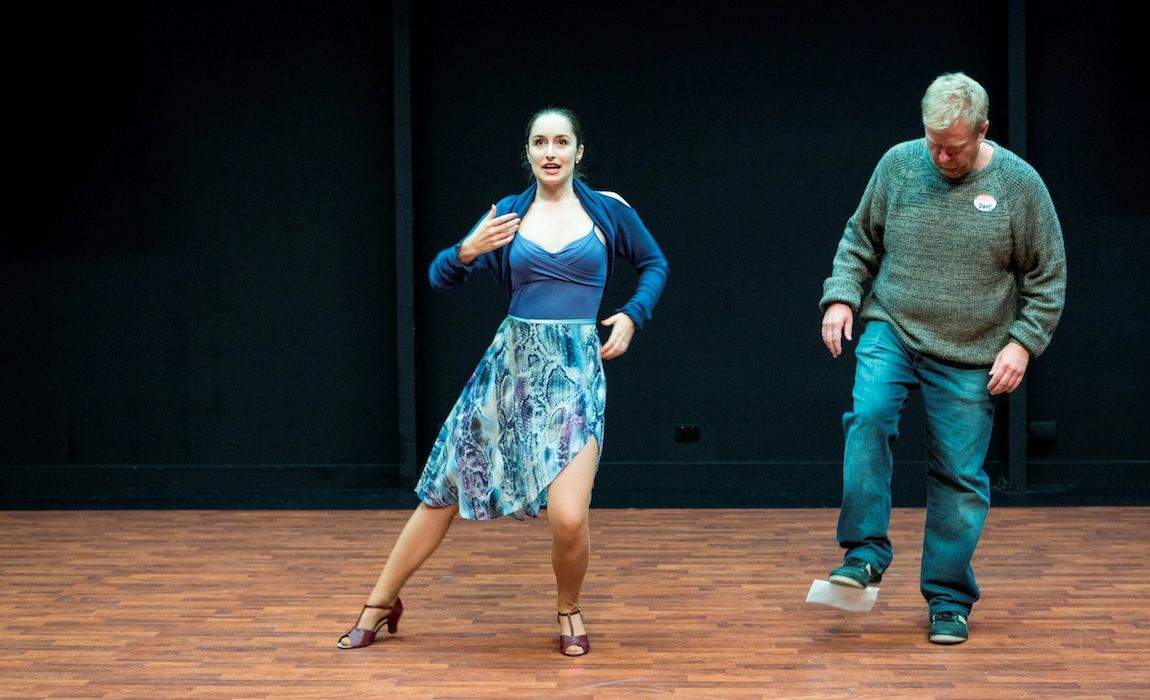Dance Better at Parties – Sydney Theatre Co
A simple piece about loneliness, intimacy and tango.
Overview
Dance Better at Parties is a play about loneliness, intimacy and tango. As the piece is directed by Chunky Move's Gideon Obarzanek, I expected an experiment in form; a contrast between dance and drama. But Dance Better at Parties is simply a play with lots of dancing in it. Its premise is plain middle-aged dad Dave (Steve Rodgers) has signed up for his free introductory dance class, at an unspecified suburban studio with dance instructor Rachel (Elizabeth Nabben). After some hesitation and effective salesmanship from Rachel, he signs up for his 12-week course, "tailored" to his dance needs, which is to dance better at parties. Despite his simple request, he becomes pretty adept at flamenco and busts out some fierce Latin jazz.
Obarzanek devised the piece with his two actors, and it is disarmingly uncomplicated. We're invited in to the fairly banal world of a dance studio, where we enjoy the pair's flirtations and spats in a homely, comfortable setting. Designer Renee Mulder's unadorned set evokes suburban isolation but also a feeling of privacy. Lighting designer Benjamin Cisterne has opted to leave the house lights on at the start of the show, which makes it feel more like hanging out in a rehearsal room than going to a play. The entire piece feels a bit like watching a rehearsal process.
There is merit in this sort of simplicity, but it would seem to lend itself more to dance, where gesture and words can float around in the abstract. This is not a dance piece though; it is a drama with a 'real-life' narrative and the simplicity reads as incompleteness. The story also has a number of red herrings in it, such as Rachel's seemingly ominous request for Dave's bank details and a moment in the dark where Rachel appears to be terrified of him. Devising a piece is surely as much about editing as adding and the show would benefit from the omission of these deviations. The picture of an uncoordinated, lonely man dancing is powerful enough.
Steve Rodgers would be captivating reading the proverbial phone book and he certainly makes the show; in fact, its success as a piece of entertainment relies on him. He is a natural clown and has a capacity for pathos that is remarkable. The closing sequence in which he artlessly stares at us in a moment of dejection is acting at its finest. His performance is a joy to watch, but directorially the piece is slightly weak.





